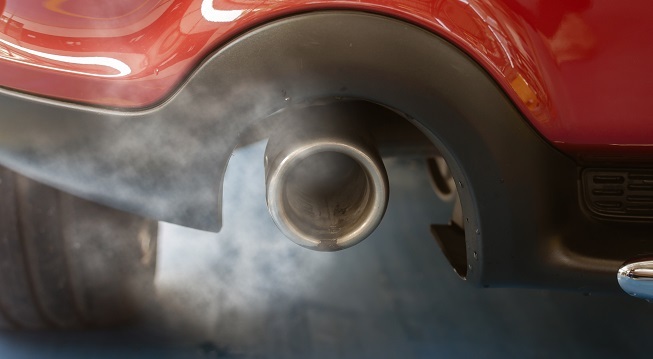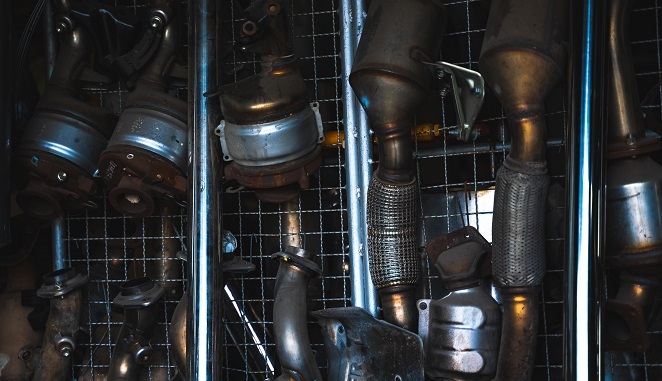
 Data Structure
Data Structure Networking
Networking RDBMS
RDBMS Operating System
Operating System Java
Java MS Excel
MS Excel iOS
iOS HTML
HTML CSS
CSS Android
Android Python
Python C Programming
C Programming C++
C++ C#
C# MongoDB
MongoDB MySQL
MySQL Javascript
Javascript PHP
PHPPhysics
Chemistry
Biology
Mathematics
English
Economics
Psychology
Social Studies
Fashion Studies
Legal Studies
- Selected Reading
- UPSC IAS Exams Notes
- Developer's Best Practices
- Questions and Answers
- Effective Resume Writing
- HR Interview Questions
- Computer Glossary
- Who is Who
What is the full form of EGR?
Introduction to EGR
Exhaust Gas Recirculation or EGR functions by returning some of the exhaust gas from an engine to the cylinders. Diesel and some hydrogen engines employ exhaust gas recirculation as a method of reducing nitrogen oxide emissions.

The combustion chamber's oxygen content is reduced and ambient air is replaced by the exhaust gas. Lower oxygen levels allow for less fuel to burn inside the cylinder, which lowers max in−cylinder temperatures. The actual volume of recycled exhaust gas changes depending on the engine's operating conditions.
Benefits of EGR
Higher Horsepower − The oxygen density of the engine's air−fuel mixture increases significantly when an automobile's EGR system is removed. This boost will only result in an increase in the motor's apparent horsepower in many engine types.
Greater fuel efficiency − Redirecting exhaust gases back into the engine for reuse is the goal of the EGR system. There are more productive systems than this one, though. In some circumstances, it may be more advantageous to direct exhaust gas away from the engine. You might notice a slight increase in fuel efficiency with the proper aftermarket kit fitted, which would help customers save money at the petrol pump.
Lowers the engine's temperature − A lot of smoke is reported to accumulate in EGR valves. The exhaust gases will find a way around if the cooling systems or valves get blocked, causing an obstruction. This issue causes the motor's internal temperatures to rise naturally, and you can experience a loss of power. Less soot accumulates when the emission control system is ignored. You won't have to worry about clogs again; your engine will run at average temperatures.
Less Repair Work − The optimised motor alone won't keep more money in your wallet. You need to worry about fewer repairs if the EGR valve is still intact. You can be looking at a sizable repair expense if the EGR system is damaged or malfunctions. Budgets cannot be created without it.
Working principle of EGR
Gases from the exhaust are no longer flammable. The fuel charge is made less flammable by diluting the inhaled air with exhaust gases. Not all cars have an EGR system; many more recent models use other methods to regulate the temperature of combustion and NOx emissions, such as variable valve timing.
To regulate the flow within the EGR system, the engine computer controls the opening or closing of the EGR valve. The intake manifold and exhaust manifold are joined by the EGR valve. The EGR valve is typically shut off. When the engine is chilly idle, or under heavy acceleration, there is minimal EGR flow. When travelling at a constant speed and under a modest load, the EGR flow is at its highest.
The vacuum actuator used in various automobiles controls the EGR valve. Modern vehicles come equipped with an electric EGR valve and a step motor.
The EGR system and other emission control systems are periodically tested by the PCM. The PCM recognizes a problem if the flow is greater or smaller than anticipated and illuminates the engine light on the dash panel.

The EGR flow can be observed in a number of various ways. In the intake section of the EGR system, a temperature sensor for the EGR is used in some vehicles. The hot exhaust gases cause the EGR valve to open, which raises the ambient temperature on the intake end.
Types of EGR system
Diesel high −pressure EGR valves − When soot and oil vapour mix to form sludge, diesel high−pressure EGR valves deflect the heavy−flow, high−soot exhaust fumes before it enters the diesel particulate filter. The gas is subsequently returned to the inlet manifold via a pipe or internal cylinder head drill. Since the vacuum in the intake manifold is not present naturally in diesel engines, a secondary valve is furthermore employed to help produce one.
Diesel low −pressure EGR valves − The exhaust gas should be diverted after it has gone through the diesel particulate filter since it has a lower flow and is virtually entirely free of soot. A pipe is then used to return the gas to the input manifold.
Gasoline EGR valves − similar to the high −pressure diesel equivalent, redirect the exhaust gases. The exhaust gases are drawn in by the vacuum produced by the cylinder depression, and the flow is controlled by opening and shutting the EGR valve itself.
Conclusion
EGR, a widely and effectively applied technique for automotive applications, modifies the incoming air to minimise NOx emissions at the source. A portion of the exhaust gas gets cool and cleaned before being circulated to the side that receives salvage air. Its impact on NOx generation is caused in part by a drop in oxygen levels in the combustion zone and in part by the amount of water and carbon dioxide present in the exhaust gas. Water and carbon dioxide have larger molar heat capacity than air, which lowers the maximum combustion temperature and reduces NOx generation.
Frequently Asked Questions
Q1. Is it harmful to remove EGR?
Ans: EGR removal may be advantageous for the health of the engine, but it will be detrimental to the environment. EGR cycles the exhaust to keep the engine from emitting as many emissions; if the EGR is turned off, the engine will emit more emissions.
Q2. How does a diesel engine with an EGR deletion kit operate?
Ans: Diesel engines normally circulate the cooled exhaust gases back into the system after cooling them. The exhaust remains hot when you disable this feature with an EGR deletion kit. Depending on the vehicle, this could raise the temperature of the exhaust gases, which could reduce the cooling system's overall effectiveness.
Q3. Do all automobiles possess an EGR system?
Ans: Not all cars have an EGR system; many more recent models use other methods to regulate the temperature of combustion and NOx emissions, such as variable valve timing.

